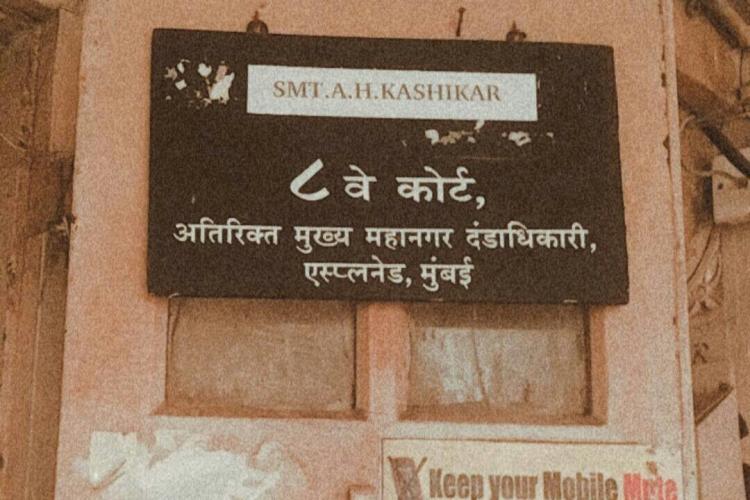The Bangladeshi Infiltrator in the Courtroom
Posted
Time to read
Guest post by Paresh Hate. Paresh is a PhD candidate at the Centre for Comparative Politics and Political Theory, Jawaharlal Nehru University, New Delhi. His work revolves around critically engaging with the discourse of ‘Bangladeshi infiltrator’ in Indian politics by looking at immigration detention and immigration law as sites of its cultivation, deployment and legitimization. Paresh is the digital editor for Migrant Solidarity Network – India and is a founding member of Hasratein: a queer collective, an LGBTQIA+ resource group and political organisation based in New Delhi, India.

The recent passing of the Citizenship Amendment Act, 2019 claims to gives easier access to citizenship to refugees from neighbouring countries on the basis of religion. The prospect of an all-India National Register of Citizens would make a list of all documented Indian citizens residing in the country so as to identify and detain/deport the ones who do not make the list. The putting together of the Citizenship Amendment Act, 2019 and National Register of Citizens is a brainchild of the current regime in power and is arguably one of its ways to ensure demographically a non-secular Hindu nation. Together they signaled the resurfacing of a figure in Indian politics that had existed among us for a long time; the infamous ‘Bangladeshi infiltrator’. Given the history of nativist politics and state-oriented security discourses in locations, such as Assam, Maharashtra and New Delhi, among others, the figure of the Bangladeshi infiltrator has been central to the self-articulation of not only discourses of religious and ethnic nativisms but also those defined by security and sovereignty in India.
As Michael Gillian argues, the ‘Bangladeshi infiltrator’ is thought to be someone who carries “sinister Islamic/Bangladeshi conspiracy to undermine India’s territorial integrity and the demographic basis of a Hindu nation.” But depending on the context, this person is also considered to steal jobs as was the rhetoric in Maharashtra or threaten indigenousness and its culture as is suggested in Assam. This happens at the level of parliament, executive and judiciary. In this post, I provide a glimpse of the judiciary’s role in facilitating this discourse.
In December 2019 I spent almost two weeks at Court Room No. 8, Esplanade Chief Metropolitan Magistrate, in Mumbai attending the trials mostly pertaining to the Foreigners Act, 1946 and The Passports Act, 1967 but also the Passport (Entry into India) Act, 1920. These acts are crucial to understand immigration law in India through which the regulation of migrants takes place. The laws define the legitimate forms of entry, exit as well as the requirements, scope and scale of penalty for migration into India. Through attending the many hearings over that period and looking at the same days’ cause lists, I found how these acts were disproportionately used to frame Bengali-speaking Muslims as undocumented foreigners, almost all of whom lived in shanty houses and slums in certain ghettoized parts of the city.
To a very large extent, these cases were filed by the Special Investigation Branch (SIB) of the Criminal Investigation Department (CID) ‘I’ Branch of Mumbai which was designated to find undocumented immigrants in the city. Usually, the CID ‘I’ Branch would get “tipped off” from local informants about Bangladeshis in particular areas of the city after which a raid would be planned there. These informants are usually residents of the same areas and sometimes are Bangladeshis themselves. After they’ve been located and taken into custody for further inquiry, they give up and confess to being Bangladeshis who have irregularly crossed the border to come to India and provide details about how and when they came and where they came from.
The officers who were part of these raids would often testify on behalf of SIB CID ‘I’ Branch While the law used to convict these individuals pertains to lack of sufficient documentation, the accusations are always made that they are Bangladeshis. For according to the official state rhetoric, the undocumented is always already a Bangladeshi. All of these testimonies were in Marathi language, so, the sitting judge would translate it in English for the typist for documentation purposes.
Every time the officer-on-record would use the term ‘Bangladeshi’ to describe the accused, the judge would translate it as ‘Bangladeshi national’. It is important to note here that the word ‘national’ was not a new addition to the meaning. In Indian languages, the term Bangladeshi means a national of Bangladesh. Therefore, adding ‘national’ to the term was, at the most, redundant; thus, conforming to the formal terminology in Indian English. However, when the officer-on-record would say they confirmed the said person was ‘Bangladeshi’, the judge would translate the term as ‘Bangladeshi infiltrator’ for the typist. Even though Marathi has an equivalent of the term ‘infiltrator’ which is ‘ghuskhor’, it was not used by the officers giving testimonies. As is clear to anyone in India, the word ‘infiltrator’ is a powerful term with serious connotations, to which the judge draws on when employing the term.
While speaking to the courtroom-stationed CID ‘I’ Branch officer who handled such cases, I asked why Bangladeshi nationals are overrepresented against Pakistani migrants. The officer casually answered, ‘Pakistanis don’t come like this. Their manners are different.; thus, alluding to how state institutions, media, public and mainstream politics perceive different communities of migrants in the country. In turn, these portrayals are governed through specific forms of discourses which shape both the social perception and the use of specific laws to target them.
‘Bangladeshi infiltration’ as a discourse is part of the security-juridical complex that underpins the governance of migration in India. By employing specific discursive figures for migrants, it becomes easier to ignore the empirical realities through which the migrant experience is shaped and how the institutional space, in this case the courtroom, fits that experience into a narrative which is reinforced with each individual case.
The CID officer I spoke to recognized how most of the accused and convicts of immigration law in the Mumbai court were precarious economic migrants. He said that in some cases the judge gave a lighter sentence out of sympathy but that did not change the dominant narrative of these migrants being seen as ‘infiltrators’.
While speaking to some of the accused, I also saw them worrying lesser than other Indian Muslims about the upcoming National Register of Citizens that the current government has promised. While they were aware of its grave implications for Bengali-speaking Muslim migrants in the city which meant hounding by police and right-wing party members, slum demolitions, detention and loss of ration cards and other welfare benefits and knew of the abysmal travesty in Assam, suffering for them was not a future prospect of the National Register of Citizens but part of their everyday interaction with the police and the law. One of the accused said that his court-case had been ongoing for 12 years, during which time he has even managed to learn English and Marathi. Another one said that his family insists he gets married soon but he is unable to because of the fear that he will get jailed and his wife will be left to look after herself. Another accused, an old lady, was left to stand at the entrance of the building because there was no one to accompany her and the police did not assist her. According to someone else present there, she had a leg injury and could not climb the stairs but also did not know how to use the elevator to reach the courtroom on her own. For many of these people stuck in the loopholes of such cases, even without any National Register of Citizens, they will still get persecuted under the immigration law and the legalese and practices which make citizens ‘illegal’. For them, the National Register of Citizens will simply be like rubbing salt on their wounds.
The courtroom is not the only space where we find the ‘Bangladeshi infiltrator’. However, it is here that Bangladeshi migrants routinely get affected by the decisions of law enforcement authorities. Furthermore, at the level of the judiciary, the discourse of ‘Bangladeshi infiltrator’ gets sanitized i.e. the migrant against whom it is used is stripped off of her religious, ethnic and class characteristics to turn it into a figure in a pseudo-legal category for administrative use. Any serious prospect of migrant justice politics demands reckoning with the many formations of discourses used against migrant populations at multiple levels, and knowing them well enough is the only way to deconstruct them.
Note:Thanks to Sukanya Shantha for her help in guiding through the courtroom space and her insights on the same in her article.
Any comments about this post? Get in touch with us! Send us an email, or post a comment here or on Facebook. You can also tweet us.
__________
How to cite this blog post (Harvard style)
Hate, P. (2020). The Bangladeshi Infiltrator in the Courtroom. Available at: https://www.law.ox.ac.uk/research-subject-groups/centre-criminology/centreborder-criminologies/blog/2020/12/bangladeshi [date]
Share
YOU MAY ALSO BE INTERESTED IN
With the support of








